How everyday Australians are using ChatGPT and other AI to get a payrise and more
From a pay rise to a fitness plan, or kickstarting a new task – there are lots of ways to use new AI tools. See how it works and what the laws are in Australia.
Australians are divided over artificial intelligence – but whether you fear it or revere it, the advent of AI is here and it can’t be ignored.
Exclusive insights from Lonergan Research revealed 44 per cent of Aussies surveyed in May believed new advances in AI would have a net positive impact on society.
The same portion, however, expected a net negative impact.
Men and Generation Z (aged 18 to 24) respondents were most likely to be excited by the possibilities, while women and Baby Boomers (aged 60 plus) were less convinced.
Almost seven out of 10 respondents across the board said Australian companies should agree to pause AI development until governments could catch up and implement AI regulation.
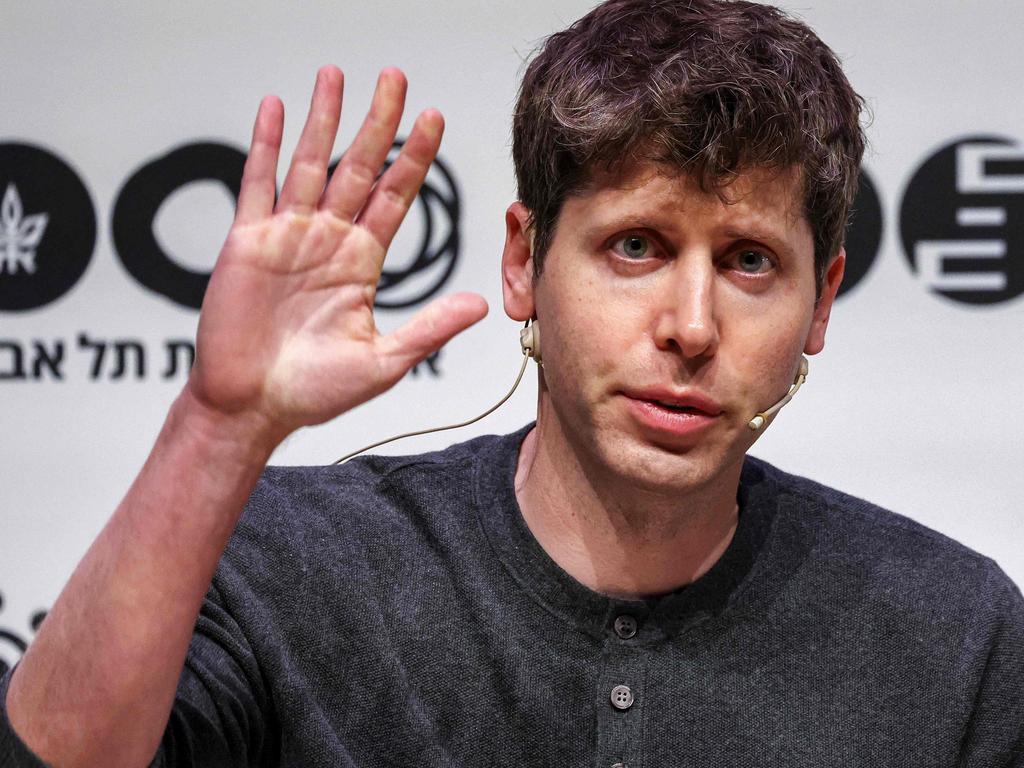
This echoed global calls in an open letter published in March that has since amassed more than 30,000 signatures, including from Elon Musk and Steve Wozniak as well as university academics, AI researchers and software engineers.
A recent statement published by the US-based Centre for AI Safety – “Mitigating the risk of extinction from AI should be a global priority alongside other societal-scale risks such as pandemics and nuclear war” – was also supported by figures including Sam Altman, chief executive of OpenAI, creator of ChatGPT, and Geoffrey Hinton, a “godfather of AI” who sensationally quit his job at Google so he could talk freely about the dangers of the technology.
Australia does not yet have defined laws that regulate AI but it’s coming, according to technology law expert David Fischl.
“Governments around the world are in a race to change their laws to achieve the delicate balance of protecting their citizens and local industries from adverse impacts of AI and encouraging their economies to adapt to and leverage the competitive benefits of AI,” the Hicksons Lawyers partner said.
For now, existing defamation, privacy, anti-discrimination or consumer laws should protect everyday Australians if they were negatively affected by an AI system producing incorrect or false claims or information about a person, discriminatory information, or misleading or unfair information or advice.
“Depending on the law, actions could be taken against the business that made the AI system available to the end user, as well as the company that manufactured the AI system,” Mr Fischl said.

But for every warning, there was also someone highlighting productivity benefits.
Microsoft chief executive Satya Nadella said generative AI would be integral for continued economic growth.
Accenture applied intelligence lead for Australia and New Zealand Kelly Brough said AI would allow companies to reinvent the way we work.
Ms Brough urged governments and organisations to pay close attention to any legal, ethical and reputational risks associated with AI but said ultimately “the positive impact on human creativity and productivity will be massive”.
“Every role in every enterprise has the potential to be reinvented, as humans working with AI copilots becomes the norm, dramatically amplifying what people can achieve,” Ms Brough said.

Most Australians agreed.
The Lonergan research found 56 per cent believed AI would increase productivity in workplaces, with this figure even higher among Millenials (66 per cent) and Gen Z (65 per cent).
Work futurist and adjunct fellow at Swinburne University’s Centre for the New Workforce Dr Ben Hamer encouraged people to embrace generative AI and use it to their advantage.
“One billion people globally are using (ChatGPT), which is one-eighth of the world’s population,” Dr Hamer said.
“This is the biggest uptake of any technology that we’ve seen in history, so it’s not going anywhere.”
Although he acknowledged a need for AI regulation and consequences for people who misused it, Dr Hamer’s advice for the average Australian was to just “give it a go”.
“Actually try the platforms, the tools in a way that’s meaningful to you and your life,” he said.
“As far as work’s concerned … it’s as if everyone now has their own personal intern.
“You can almost start delegating some of that workload to the AI,” he said.

Dr Hamer said ChatGPT was first seen as a gimmick but had since been applied in powerful ways, from teachers developing lesson plans for neurodiverse students, to creatives generating movie scripts.
He believed Australia was not investing enough money to develop AI technologies or upskill the workforce.
“There will be a digital divide that grows based on those that know, are familiar and are comfortable using the technology versus those that don’t,” he said.
The Australian Government is currently accepting feedback on how it can support responsible AI via consult.industry.gov.au/supporting-responsible-ai
HOW EVERYDAY AUSSIES ARE USING AI
NEGOTIATING A PAY RISE
Heading into annual review season, workers can leverage AI to negotiate a raise.
Hays chief executive for Asia Pacific Matthew Dickason said workers would need to demonstrate specific and quantifiable evidence of why they deserve more money and could use ChatGPT to generate ideas.
He suggested the prompt: “I am a (insert job title). I would like to highlight my achievements to support my request for a pay rise. Can you brainstorm specific achievements that would demonstrate my value to the organisation?”.
The chat bot could also be used to role-play the meeting and improve a worker’s confidence.
Mr Dickason suggested a prompt such as: “I want to practise presenting my persuasive narrative and evidence for a pay rise. I will present my case to you. Please listen to my evidence and provide feedback on the relevance and clarity of my case. Suggest improvements where required.”
The latest Hays Salary Guide revealed 65 per cent of professionals in Australia and New Zealand planned to ask for a pay rise over the next 12 months, up from 58 per cent last financial year and 45 per cent the year before.
And more money is actually on the cards, with 95 per cent of employers planning to oblige.

SUPPORTING SIDE HUSTLES
Almost a third of small business owners have used generative AI, such as ChatGPT, and another two in five intend to give it a crack.
New research from web hosting company GoDaddy revealed the tasks most commonly delegated to AI include drafting social media copy (reported by 47 per cent of AI-savvy business owners), conducting market research (41 per cent), devising social media strategies (39 per cent) and researching competitors (30 per cent).
Melbourne’s James Emery, 27, estimated AI was saving his small business, The Neighbour’s Cellar, about 20 hours of work per week and about $1500 a month.
Mr Emery launched the e-commerce store with his housemate in 2020, selling personalised alcohol bottles for events such as birthdays and anniversaries.
He has used ChatGPT to help brainstorm social media ideas, create financial summaries, write blog posts and plan a business trip.
“We had a social media manager but since AI has come along, we haven’t needed that as much,” he said.
“In terms of allowing us to focus on areas of the business that will move us forward, it’s saved us lots of time and obviously time is money in small business.”
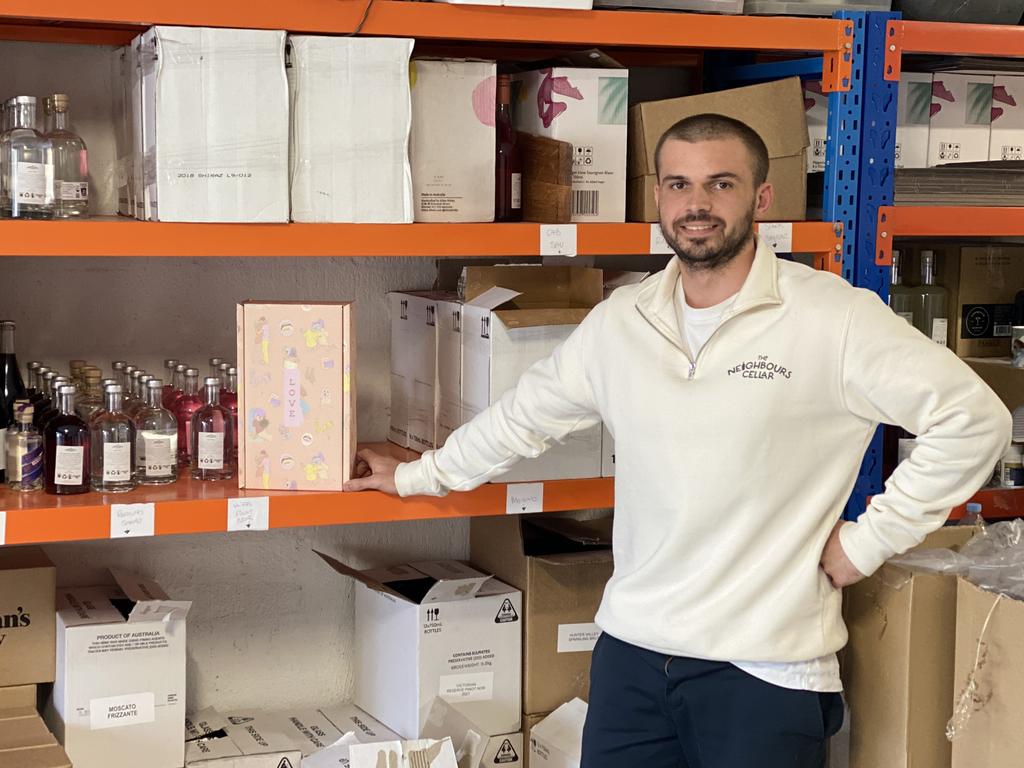
WRITING A BOOK
Productivity coach and author Donna McGeorge produced her latest book in less than half the usual time by using ChatGPT like “an eager intern with a hangover”.
Ironically titled “The ChatGPT Revolution: How to simplify your work and life admin with AI”, the book was taken from ideation to print in about three months, down from her typical eight or nine months.
“Some people imagine that you just give ChatGPT a prompt then file your fingernails while it writes 35,000 words for you,” Ms McGeorge said.
“It’s more like you have someone sitting next to you and you can say ‘hey, what do you think about this?’.”
Ms McGeorge used ChatGPT to help her come up with the initial structure of the book, as well as some ideas for case studies to include.
It also helped her tighten up chapters to keep them within the set word count.
“It was like having an eager intern with a hangover – it was very eager to help with everything but I had to double check its work a lot,” she said.
Her advice for first-time writers, however, was to not jump straight into ChatGPT from the get-go: “Grab a notebook and pen and sit in the sunshine and ponder your thoughts, because ChatGPT is a doer not a thinker.”

LEARNING TO CODE
Brunswick ceramist Ian Dudley planned to build a portable photo booth for many years but always put off starting the project as he didn’t know how to code.
Until ChatGPT came to the rescue.
“The photo booth takes a photo with a small camera module wired to a Raspberry Pi computer, uploads the image to Google Drive and displays a QR code to download the picture,” Mr Dudley said.
“The problem was, I didn’t have coding skills and learning Python is usually not a weekend endeavour.”
With ChatGPT, what would have taken months took him weeks.
“I was able to troubleshoot, ask for sections of code and learn how to put the different components together,” he said.
Mr Dudley’s advice for people starting out with ChatGPT was to simply ask it questions – but keep a healthy dose of scepticism about the information given back.
“It may or may not be 100 per cent true or up to date,” he said.
“But, it can get you a lot closer to the mark a lot faster than you’d be able to by researching on your own.”
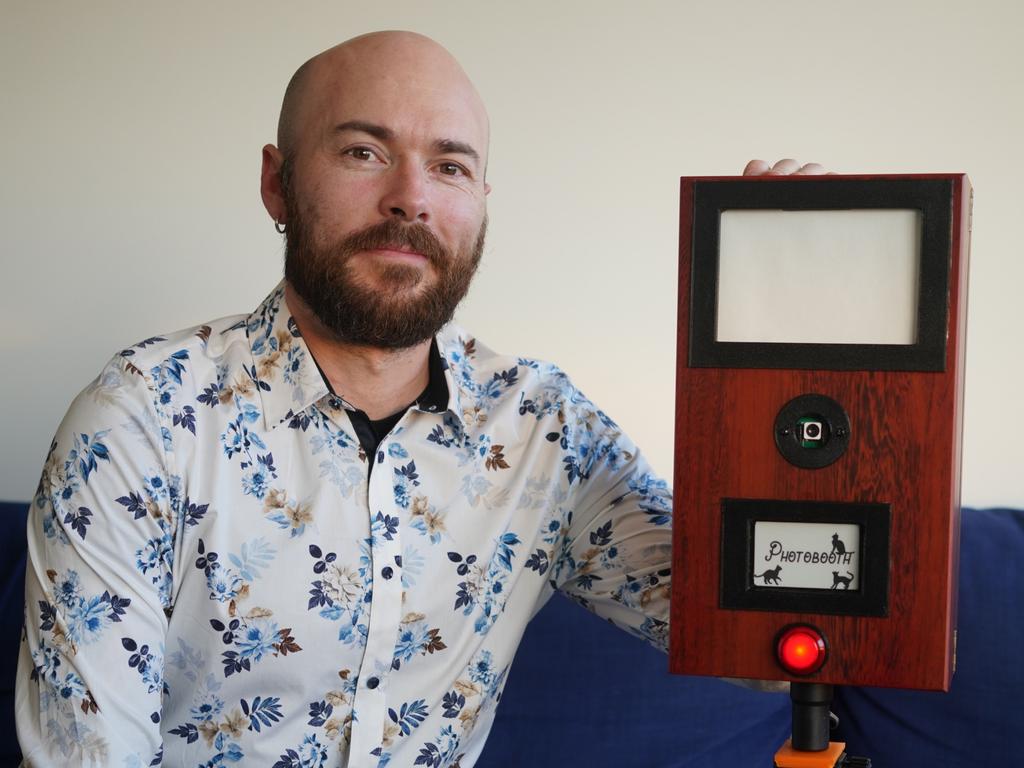
EDITING VIDEOS WITH EASE
Editing a video can be cumbersome, whether it’s for a YouTube channel, client, or a friend’s birthday.
With the help of AI, the latest version of Adobe Premiere Pro allows users to whip up a rough cut as fast as editing a text document.
Once the app has transcribed the video, they can add clips to their timeline by selecting the relevant part of the transcript, then copy and paste or delete text to move clips around or remove that part of the video.
AI is expected to make video editing a lot easier for those who are new to editing, however, a final human touch will still be necessary.
Similar functionality is also available in free app Descript.
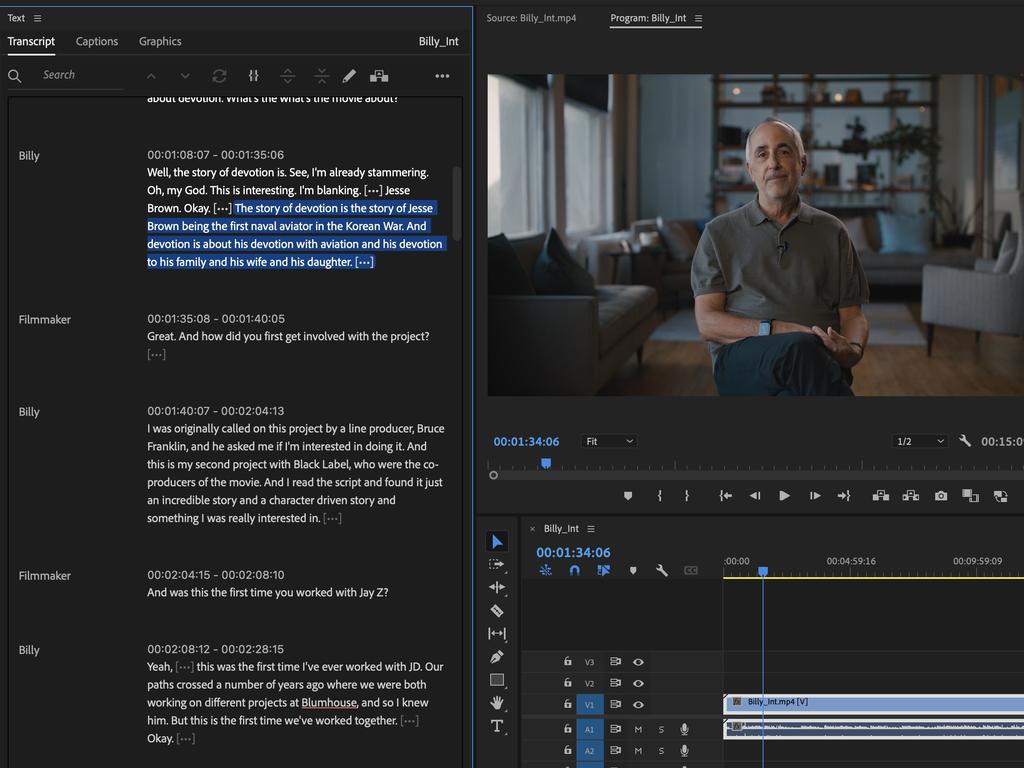
AI-POWERED MAKEOVERS
Juggernaut text-to-image artificial intelligence Midjourney allows users to unlock their imagination and make themselves over.
Beginning with a reference photo and a prompt starting with the command “/imagine”, they can then talk to the AI, describing the scene they want to put themselves in.
Midjourney understands descriptions from studio lighting to the settings on a Canon M50 and the brushstrokes of the Mona Lisa.
For example, reporter Melanie Burgess was turned into a Disney character using a prompt that said her dress should have “silver butterflies that accentuate the neckline” and a “voluminous skirt” that “resembles a twilight mist”.
But this prompt was even generated by an AI.
ChatGPT was asked to use its imagination so it invented the scene, the studio settings and even the brand of film.
One AI told another AI how to transform Melanie and this was the result.


AT WORK AND AT HOME
OpenAI’s ChatGPT app has landed in Australia, available for iPhone.
It allows users to switch between the free GPT3.5 model and more powerful paid GPT4 model, depending on their plan.
Brisbane’s Blake Chant, 33, uses ChatGPT daily as part of his job in the oil and gas industry, and recently downloaded the app.
“Part of my job is reviewing risk assessments and procedures so I’ll do the review then run that same paperwork through ChatGPT to see if I missed anything key,” Mr Chant said.
“I also have the app on my phone and find I am using it more like Google.
“With Google, if you look up a recipe, you get a website and have to go through it, but if you look something up on ChatGPT it’s very direct and you can tailor your answer.”
The app syncs between a user’s mobile device and the web, allowing them to continue a conversation without interruption.
The app will be available for Android users soon.
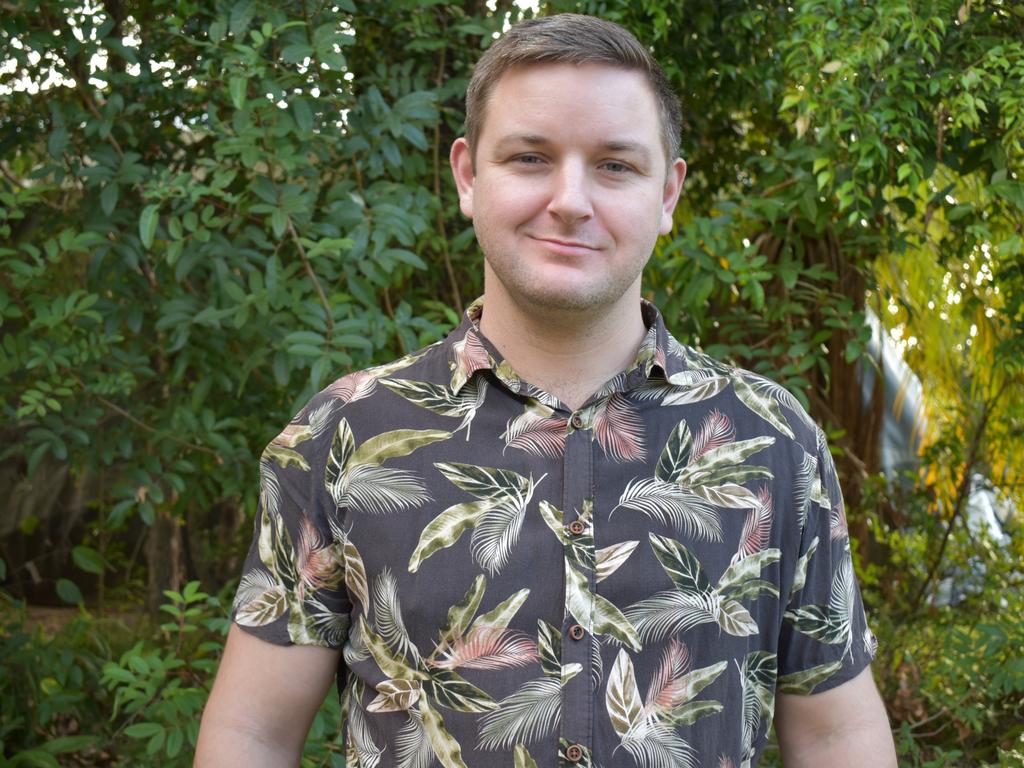
PERSONAL TRAINING
The Planfit plug-in for ChatGPT is an AI-powered workout coach.
Users can create comprehensive workout plans without the need to scour the internet for exercises or click through multiple websites and videos.
They can specify preferences, such as the number of workout days and what exercises they don’t like or can’t do, then just sit back while it whips up a workout plan all within the chat window.
Modifying the plan is also just a message away.
All the exercises are linked back to the Planfit website where the user can see how to perform the exercise and coach’s comments.
Plug-ins are only available with a paid ChatGPT plan.

TRANSCRIBING YOUTUBE VIDEOS
Find insights in videos without having to watch from start to finish, with the help of ChatGPT.
Here is a step-by-step guide:
1. Click the three dots under a YouTube video and select ‘Show transcript’.
2. Click the three dots next to the transcript and select ‘Toggle timestamps’ to get rid of the time stamps.
3. Click and drag to highlight the whole transcript, then copy and paste it into the ChatGPT conversation window.
4. Add a prompt asking ChatGPT to clean up the copy, such as “improve this transcript by adding punctuation, capital letters and paragraphs.”
5. The transcript can now be easily searched for keywords or ChatGPT can summarise into dot points. Note: the AI is not perfect, so the transcript should still be checked.
More Coverage
Originally published as How everyday Australians are using ChatGPT and other AI to get a payrise and more




